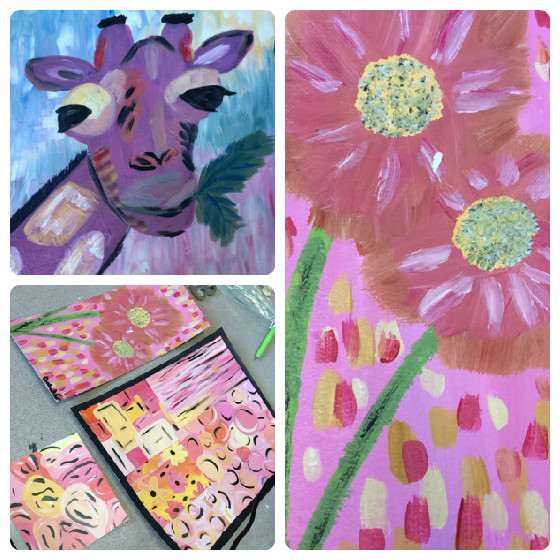We typically have three main ways to decide which artists to teach our students about:
- The artists we learned in school
- The artists we personally like
- The artist that best connects with whatever lesson we’ve already planned
These reasons stopped feeling like enough for me a few years ago. I wondered how I could present art history to help students make personal connections. In fact, I spent years stressing about which artists I should teach my students.
Finally, I decided to look at it a different way. I asked myself, “What do I want my students to learn from the work of artists?” The answer I arrived at was that I wanted to show artists that would inspire and connect with my students. I wanted personalized relevancy.

The revised National Visual Arts Standards align with this thought. For example, one standard asks that beginning high school students “analyze, select, and curate artifacts and/or artworks for presentation and preservation.” It asks for students to actively interact with images, not sit and listen to a lecture.
My overarching goal was to curate relevant images for my students. So, I developed the following guidelines to help art history in my room become student-centered. I want to share them with you today because they work!
Here are 4 ways to help students
personally connect with art history.
1. Show more than one example per project.
How can we encourage creative thinking when just one example is used for an entire lesson? There are many great ways to make art. Celebrate this fact by including three to five examples for each lesson. You can include a range of works by the same artist or preferably, works by a selection of artists on the same subject or theme. This method supports originality and creative thinking.
2. Include current, working artists.

Why just teach about adinkra cloth when you can add so much more depth by including El Anatsui? Contemporary artists are making art about current ideas and using media that resonates with our students. Use resources like ART21 and thisiscolossal.com to find them.
3. Teach inclusively.
Why are so many important artists dead white guys? It might have something to do with the fact that similarly-identified people have traditionally been in charge of recording our history. There’s nothing wrong with including these artists, as long as it’s not just them. Look beyond the top 10 greatest artists of all time list and find sources that are varied by culture and gender. Doing so will expand students’ world views.
4. Let students decide.
Provide some resources, assign a topic, form groups and let your students decide what artists they’re interested in learning more about. Then, have them share what they learned by presenting to the class. Next, provide the opportunity for students to apply ideas that have inspired them in personal work.
Art history doesn’t have to be teacher-directed. It can become student-centered and make deep connections when students are given the responsibility of deciding what to learn about.
How do you make art history student-centered?
What artists have your students been drawn to recently?
Magazine articles and podcasts are opinions of professional education contributors and do not necessarily represent the position of the Art of Education University (AOEU) or its academic offerings. Contributors use terms in the way they are most often talked about in the scope of their educational experiences.




